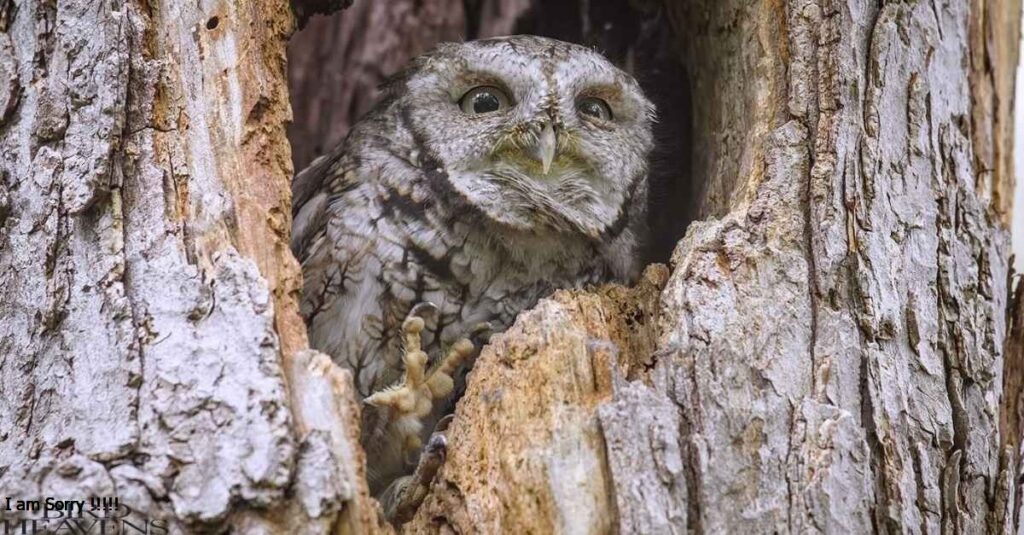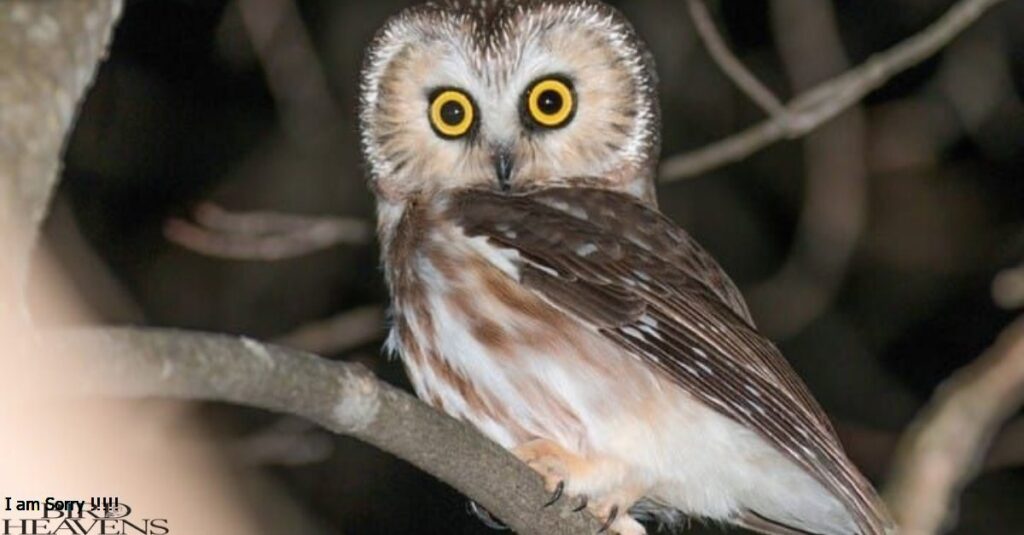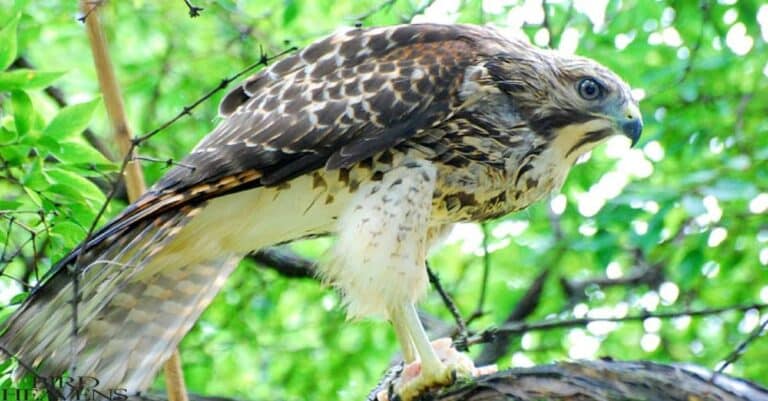8 Owls In Tennessee – The Complete List (With Photos)
Tennessee is home to fascinating owl species.Following are owls found in Tennessee
1. Barn Owl: Known for its heart-shaped face
2. Barred Owl: Recognizable “Who cooks for you?” call
3. Eastern Screech-Owl: Small with red and gray morphs
4. Great Horned Owl: Largest owl in Tennessee
5. Long-eared Owl: Distinctive ear tufts, winter visitor
6. Northern Saw-whet Owl: Tiny, elusive winter visitor
7. Short-eared Owl: Prefers open habitats
8. Snowy Owl: Rare winter visitor during irruption years
Each species plays a vital role in Tennessee’s ecosystems, from forests to urban areas.
8 Owls In Tennessee
Tennessee’s owl population is as diverse as its landscapes. From the majestic Great Horned Owl to the diminutive Northern Saw-whet Owl, the state hosts a variety of these captivating birds. Owls in Tennessee aren’t just fascinating to observe; they’re vital to maintaining ecological balance.
1.Barn Owl :

Scientific Name: Tyto alba
Length:12.6-15.8 inches
Weight: 14.1-24.7ounces
Wingspan: 39.4-49.2 inches
The Barn Owl, with its distinctive heart-shaped face, is one of the most recognizable owls in Tennessee. This medium-sized owl has a ghostly appearance with its pale, golden-buff coloration and white underparts.
Distinctive heart-shaped face
The Barn Owl’s most striking feature is its heart-shaped facial disk. This unique adaptation helps funnel sound to their ears, giving them exceptional hearing capabilities. In fact, Barn Owls can locate prey by sound alone, even in complete darkness.
Habitat and hunting habits
True to their name, Barn Owls often nest in barns, abandoned buildings, and tree cavities. They prefer open habitats like grasslands, fields, and farmlands. These owls are skilled hunters, primarily targeting small mammals like mice and voles.
Barn Owls hunt using a technique called quartering, flying low over open areas in a zigzag pattern. Their silent flight, thanks to specialized feathers, allows them to surprise their prey.
Conservation status in Tennessee
While Barn Owls are found across Tennessee, their populations have faced challenges. The conversion of farmland to urban areas and the loss of suitable nesting sites have impacted their numbers. However, conservation efforts, including the installation of nest boxes, are helping to support Barn Owl populations in the state.
2.Barred Owl :

Scientific Name: Strix varia
Length: 16.9-19.7 inches
Weight: 16.6-37.0 ounces
Wingspan: 39.0-43.3 inches
The Barred Owl is a common year-round resident in Tennessee, known for its distinctive call and adaptability to various habitats.
“Who cooks for you?” call
The Barred Owl’s call is one of the easiest to recognize among Tennessee owls. Their hooting sound resembles the phrase “Who cooks for you? Who cooks for you-all?” This vocalization is often heard in the evening and pre-dawn hours, especially during their breeding season in late winter and early spring.
Adaptability to urban environments
While Barred Owls prefer mature forests, they’ve shown remarkable adaptability to urban and suburban areas. In Tennessee, you might spot these owls in city parks, wooded neighborhoods, and even backyard trees. This adaptability has helped Barred Owl populations remain stable despite habitat changes.
Year-round residency
Barred Owls are non-migratory, staying in Tennessee throughout the year. This makes them one of the easier owl species to observe and study. Their year-round presence also means they play a consistent role in controlling rodent populations across seasons.
3.Eastern Screech-Owl :

Scientific Name: Megascops asio
Length: 6.3-9.8 inches
Weight: 4.3-8.6 ounces
Wingspan: 18.9-24.0 inches
The Eastern Screech-Owl is a small but charismatic owl found throughout Tennessee. Despite its name, this owl’s call is more of a soft trill than a screech.
Color morphs: red and gray
One of the most interesting aspects of Eastern Screech-Owls is their color variation. In Tennessee, you might encounter two primary color morphs:
- Gray morph: More common overall, with gray-brown plumage and intricate patterns.
- Red morph: Less frequent, featuring a rusty-red coloration.
These color variations help the owls blend into different environments, from tree bark to autumn foliage.
Unique trilling call
Unlike the name suggests, Eastern Screech-Owls don’t screech. Their primary call is a soft, descending trill that sounds almost horse-like. This distinctive vocalization is often heard at night in both rural and urban areas across Tennessee.
Nesting habits in tree cavities
Eastern Screech-Owls are cavity nesters, preferring natural tree hollows or abandoned woodpecker holes. In urban and suburban areas, they’ve been known to use nest boxes, making them a favorite among backyard birders in Tennessee.
4.Great Horned Owl :

Scientific Name: Bubo virginianus
Length: 18.1-24.8 inches
Weight: 32.1-88.2 ounces
Wingspan: 39.8-57.1 inches
The Great Horned Owl is the largest owl species in Tennessee and one of the most powerful predators in North American forests.
Largest owl species in Tennessee
With its impressive size and distinctive “horns” (which are actually feather tufts), the Great Horned Owl is an imposing presence in Tennessee’s forests. Their large yellow eyes and deep hooting call add to their formidable appearance.
Fierce predator reputation
Great Horned Owls have earned the nickname “tiger owls” due to their fierce hunting abilities. They’re known to take prey much larger than themselves, including other raptors and even small dogs or cats. In Tennessee, their diet typically includes rabbits, squirrels, and other medium-sized mammals.
Adaptability to various habitats
While often associated with forests, Great Horned Owls are incredibly adaptable. In Tennessee, you might find them in deciduous and coniferous forests, farm woodlots, urban parks, and even city centers. This adaptability has helped them maintain strong populations across the state.
5.Long-eared Owl :

Scientific Name: Asio otus
Length: 13.8-15.8 inches
Weight: 7.8-15.3 ounces
Wingspan: 35.4-39.4 inches
The Long-eared Owl is one of the more elusive owl species in Tennessee, known for its slender body and distinctive ear tufts.
Slender body and distinctive ear tufts
Long-eared Owls have a slim, elongated body shape that sets them apart from other Tennessee owls. Their most striking feature is the long ear tufts that give them their name. These tufts aren’t ears at all but feathers that can be raised or lowered for camouflage or communication.
Migratory patterns
Unlike some of Tennessee’s resident owl species, Long-eared Owls are primarily winter visitors to the state. They breed further north and migrate south for the winter months. This makes spotting a Long-eared Owl in Tennessee a special treat for bird enthusiasts.
Preferred habitats in Tennessee
During their winter stays in Tennessee, Long-eared Owls prefer dense coniferous or mixed forests. They often roost in groups, sometimes called “parliaments,” making them an exciting find for owl watchers who know where to look.
You Might Like >>Why Do Geese Honk When They Fly
6.Northern Saw-whet Owl :

Scientific Name: Aegolius acadicus
Length: 7.1-8.3 inches
Weight: 2.3-5.3 ounces
Wingspan: 16.5-18.9 inches
The Northern Saw-whet Owl is one of the smallest owl species found in Tennessee, known for its diminutive size and secretive nature.
One of North America’s smallest owls
At about the size of a robin, Northern Saw-whet Owls are truly tiny predators. Their small size, combined with their cryptic coloration, makes them challenging to spot in the wild. However, their large, yellow eyes and “cute” appearance make them a favorite among owl enthusiasts.
Secretive nature and nocturnal habits
Northern Saw-whet Owls are masters of camouflage, often perching motionless against tree trunks or within dense foliage. They’re strictly nocturnal, hunting small rodents and insects under the cover of darkness.
Winter visitors to Tennessee
While not year-round residents, Northern Saw-whet Owls visit Tennessee during the winter months. They’re more common in the eastern part of the state, particularly in the Appalachian region. Birders often conduct “owl prowls” in suitable habitats during winter nights to try and spot these elusive visitors.
7.Short-eared Owl :

Scientific Name: Asio flammeus
Length: 13.4-16.9 inches
Weight: 7.3-16.8 ounces
Wingspan: 33.5-40.5 inches
The Short-eared Owl is a medium-sized owl that prefers open habitats, setting it apart from many of Tennessee’s more forest-dwelling owl species.
Open country habitat preference
Unlike many owls that stick to forested areas, Short-eared Owls are birds of open country. In Tennessee, you’re most likely to spot them in grasslands, meadows, and agricultural areas. They’re often seen hunting over fields and marshes, especially during the winter months.
Diurnal hunting behavior
One of the most interesting aspects of Short-eared Owls is their tendency to hunt during daylight hours, especially late afternoon and early evening. This makes them easier to observe than many other owl species. Their flight pattern is distinctive – a floppy, moth-like flight as they quarter low over fields in search of prey.
Conservation concerns in the state
Short-eared Owls face challenges in Tennessee due to habitat loss. The conversion of grasslands and open areas to agriculture or urban development has impacted their preferred habitats.
Conservation efforts in the state focus on preserving and restoring suitable open habitats to support these and other grassland species.
You Might Like >>Do Robins Mate For Life
8.Snowy Owl :

Scientific Name: Bubo scandiacus
Length: 20.5-27.9 inches
Weight: 56.4-104.1 ounces
Wingspan: 49.6-57.1 inches
The Snowy Owl is a rare but exciting visitor to Tennessee, typically only seen during winter irruption years.
Rare winter visitor
Snowy Owls are Arctic birds that typically spend their winters much further north. However, in some years, they make southward movements that can bring them as far south as Tennessee. These events, known as irruptions, are eagerly anticipated by bird enthusiasts across the state.
Irruptions and factors influencing southern movement
Snowy Owl irruptions are complex events influenced by several factors:
- Lemming populations: In years when lemming populations crash in the Arctic, Snowy Owls may move south in search of food.
- Breeding success: Ironically, a very successful breeding season can also lead to irruptions, as competition for food increases.
- Weather patterns: Severe Arctic weather can sometimes push owls further south than usual.
Best spots for potential sightings in Tennessee
When Snowy Owls do make it to Tennessee, they’re most likely to be found in open areas that resemble their tundra home:
- Large, open fields
- Airports
- Coastal areas along the Mississippi River
While sightings are rare, they’re not unheard of. The winter of 2013-2014 saw several Snowy Owl sightings across Tennessee, creating excitement among local birders.
You Might Like >>Vultures In Texas
Owl Watching in Tennessee :
Observing owls in their natural habitats can be a thrilling experience. Here’s how you can responsibly enjoy owl watching in Tennessee.
Best locations for owl spotting
Tennessee offers numerous excellent locations for owl watching:
- Great Smoky Mountains National Park: Home to several owl species, including Barred Owls and Northern Saw-whet Owls.
- Land Between the Lakes National Recreation Area: A good spot for Barred Owls and Great Horned Owls.
- Radnor Lake State Park: Located near Nashville, it’s known for its Barred Owl population.
- Reelfoot Lake State Park: A winter haven for various owl species, including potential Snowy Owl sightings during irruption years.
- Warner Parks: Another Nashville area hotspot for owls, particularly Barred and Great Horned Owls.
Ethical guidelines for owl observation
When watching owls, it’s crucial to prioritize the birds’ well-being:
- Keep your distance: Use binoculars or a spotting scope to observe owls without disturbing them.
- Avoid using flash photography: This can startle and stress the birds.
- Don’t use recorded owl calls excessively: While occasionally useful for research, overuse can disrupt owl behavior.
- Stay on designated trails: This protects both you and the owls’ habitat.
- Never attempt to touch or feed owls: It’s dangerous for both you and the bird.
You Might Like >> Why Do Storks Kill Their Young
Recommended equipment for owl watching
To make the most of your owl-watching experience, consider investing in:
- Binoculars: A good pair of 8×42 or 10×42 binoculars is ideal for owl watching.
- Spotting scope: For more detailed observation, especially of distant owls.
- Field guide: A comprehensive guide to North American birds can help with identification.
- Red flashlight: For night owling, a red light is less disruptive to the owls’ night vision.
- Warm, quiet clothing: Owls have excellent hearing, so quiet clothing is a must.
You Might Like >> When Do Geese Lay Eggs
Conclusion
Tennessee’s owl diversity showcases the state’s rich natural heritage. From the common Barred Owl to the rare Snowy Owl, these eight species offer a glimpse into the varied ecosystems of the Volunteer State.
Each owl plays a vital role in maintaining ecological balance, from controlling rodent populations to serving as indicator species for environmental health. As silent nocturnal hunters, they captivate both seasoned birders and casual nature enthusiasts alike.
By appreciating these fascinating creatures and supporting conservation efforts, we can ensure that Tennessee’s owls continue to thrive. Whether in dense forests, open fields, or urban parks, the owls of Tennessee remind us of the importance of preserving diverse habitats for wildlife to flourish.

Andrew Paul is a renowned ornithologist and founder of Bird Heavens. With my extensive expertise in bird behavior and habitat preservation,I will insightful content on species identification and conservation.My Future plans include interactive workshops and online courses to foster a global community of bird enthusiasts committed to conservation and appreciating avian life. Join me at Bird Heavens







